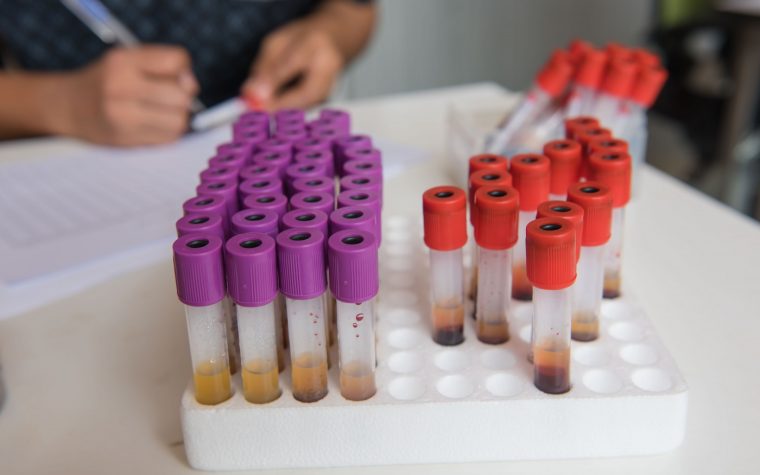This post was originally published on this site
The time to disease worsening or death usually shortens with each additional line of therapy, but that does not seem to be the case when the Bruton’s tyrosine kinase (BTK) inhibitor Imbruvica (ibrutinib) is used in people with mantle cell lymphoma (MCL), researchers found.
A pooled analysis of three clinical trials showed that Imbruvica helped most patients live longer without disease progression than their prior treatment regimen. The treatment was particularly effective when used as a second-line therapy, in which case patients lived without signs of disease worsening for over two years.
The findings were recently presented at the American Society of Hematology (ASH) 2019 Annual Meeting, in a poster titled “Long-term outcomes with ibrutinib versus the prior regimen: a pooled analysis in relapsed/refractory MCL with up to 7.5 years of extended follow-up.”
“MCL is an aggressive B-cell malignancy in which most patients have poor prognosis and are likely to relapse after their initial line of therapy. For those treated with chemotherapy, progression-free survival generally declines with each successive line of treatment,” Simon Rule, MD, professor in hematology, Peninsula Medical School, University of Plymouth, United Kingdom, said in a press release.
“These extended follow-up results from the pooled analysis of ibrutinib compared to prior regimens are very encouraging for patients with relapsed or refractory MCL — as they showed treatment with ibrutinib at first relapse versus later lines of therapy resulted in a median progression-free survival of longer than two years,” he said.
Imbruvica, developed by Janssen and AbbVie, is the standard of care for people with MCL who have received at least one prior therapy. The molecule binds permanently to the Bruton’s tyrosine kinase protein, which is key for the growth and proliferation of B-cell cancers.
The approval was based on the PCYC-1104 Phase 2 trial (NCT01236391), and later supported by additional data from the SPARK Phase 2 (NCT01599949) and the RAY Phase 3 (NCT01646021) trials. But while approved for any relapsed or refractory MCL patients, the data suggested that Imbruvica was more effective as a second-line therapy than at later lines.
This prompted researchers to conduct a pooled analysis of the three clinical trials, aiming to explore how baseline characteristics, including number of prior therapies, influenced treatment outcomes. They also compared the outcomes of patients on Imbruvica to their last treatment regimen.
The analysis included 370 patients with mantle cell lymphoma who had received at least one line of therapy (median 2) and were treated with Imbruvica in the PCYC-1104, SPARK, and RAY clinical trials.
Patients had received oral, once-daily Imbruvica for a median of 11.1 months — with some (22.4%) receiving it for three years or more — and had a median follow-up of 41 months.
The time patients lived without disease progression (a measure called progression-free survival, or PFS) on Imbruvica was compared to the time patients remained on their prior treatment regimen without needing an additional line of therapy – a measure called time to next treatment, or TTNT.
Results showed that patients had a median PFS of 12.5 months on Imbruvica, compared to a median TNTT on their prior regimen of 10.9 months. Overall, half of patients had longer times without disease worsening on Imbruvica than on their last treatment, researchers stressed.
Patients achieving a complete response while on Imbruvica had very good outcomes, with a median PFS of 67.7 months and a median overall survival not reached, meaning that more than half of these patients were alive at the time of the analysis.
Also, confirming the prior findings, people receiving Imbruvica earlier, as a second-line therapy, had better and progression-free survival (25.4 months) and overall survival rates (61.6 months) than those given Imbruvica in later treatment lines — whose median PFS was 10.3 months and median overall survival 22.5 months.
However, among the 99 patients who received Imbruvica after first relapse, the best outcomes were seen in those who had responded to their first-line therapy, defined as a TNTT of 24 months or longer. These patients had a median PFS of 57.5 months (nearly five years), over one year more than their initial TNTT of 42.2 months.
Over the follow-up, 81.6% of patients experienced a severe or worse adverse event related to Imbruvica. The most common were low levels of neutrophils, pneumonia, low platelet counts, heart problems, and shortness of breath.
“Building on the legacy of Imbruvica, these latest pooled data presented at ASH, which represent the longest follow-up to date in mantle cell lymphoma, add to the unprecedented body of evidence supporting the use of Imbruvica monotherapy to treat this rare and aggressive form of non-Hodgkin’s lymphoma,” said Danelle James, MD, MAS, Imbruvica Clinical Development Lead, Pharmacyclics LLC, an AbbVie company.
“We continue to be pleased by the proven efficacy and safety profile of this pioneering BTK inhibitor, which has shown to delay disease progression and improve durable responses when used at first relapse,” James said.
The post Imbruvica Extends Time to Disease Worsening over Prior Regimen in MCL, Data Shows appeared first on Lymphoma News Today.
The post Imbruvica Extends Time to Disease Worsening over Prior Regimen in MCL, Data Shows appeared first on BioNewsFeeds.


